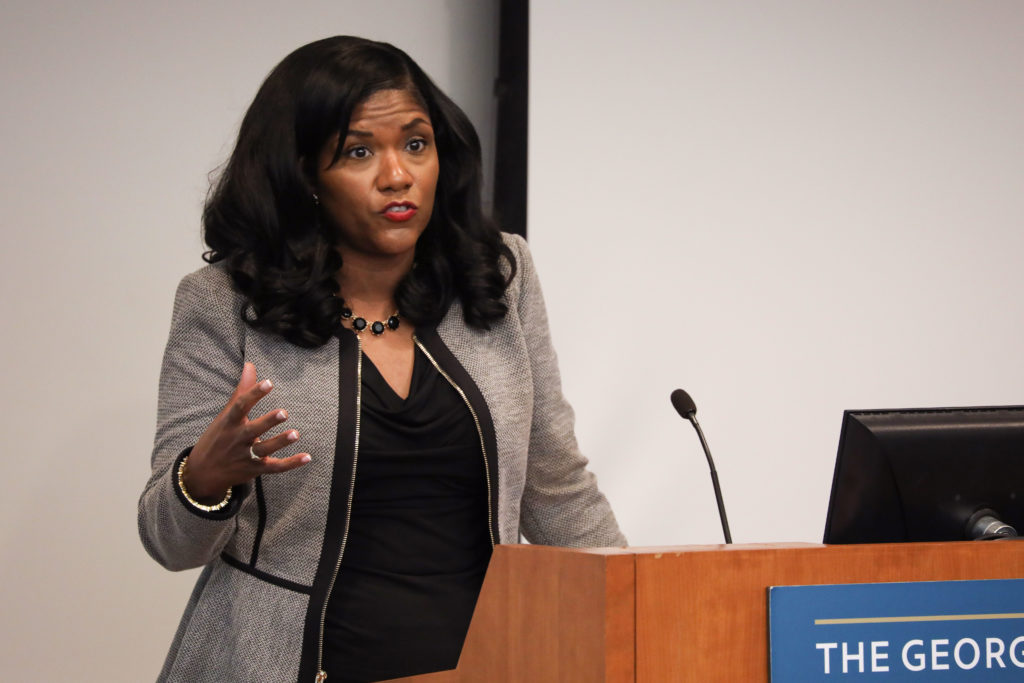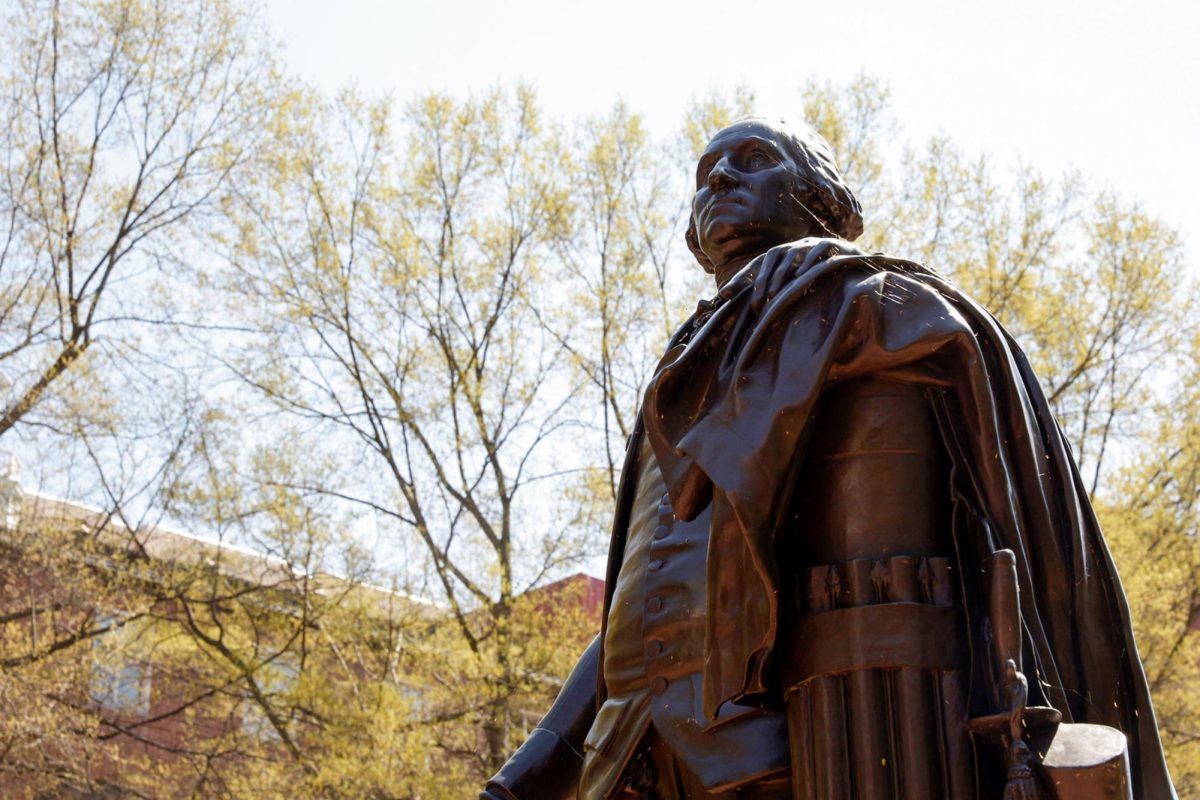The University is working to add more specific language to its discrimination and harassment policies.
The policies – which were last revised in November 2011 and will undergo a series of reviews by administrators, faculty and students this year – were introduced to faculty last week and provide examples of sanctions and corrective actions for discriminatory or harassing behavior. Officials said at a Faculty Senate meeting Friday that the updates will help students, faculty and staff clearly understand what constitutes unacceptable behavior and what conduct they should report to administrators.
“While we feel strongly that the proposed changes reflect the way the University has treated and has thought about these cases all along, we recognize that the actual language in the policy matters and that we can do better,” Caroline Laguerre-Brown, the vice provost for diversity, equity and community engagement, said at the meeting.
The draft of policies includes a definition of discrimination – an “adverse treatment of an individual based on a protected characteristic, rather than individual merit” – and includes four examples of discriminatory behavior, like singling out a person or refusing to hire them based on their race or gender, according to the document.
The draft also includes a definition of harassment – “any unwelcome conduct based on a protected characteristic where such conduct creates a hostile environment” – and includes 10 points detailing what harassment could include, like one-time or repetitive actions or a lack of intent, according to the document.
Laguerre-Brown said that while all of the listed anti-discrimination and anti-harassment policies and support systems already exist, she hopes that updating the language will make students, faculty and staff more likely to engage with administrators to use the policies and procedures when reporting an incident.
She said officials began to engage members of the Faculty Senate’s executive and professional ethics and academic freedom committees in the review process over the summer. She said the latter currently has a version of the policy to review and will submit written feedback.
She added that she doesn’t know when the feedback and revision process will be completed, and officials said that while there is no set deadline to finalize the policies, they hope to have a final draft ready for the Board of Trustees to approve in May.
After the Snapchat incident
Laguerre-Brown said that after a Snapchat with a racist caption circulated around campus last semester, several student groups raised concerns with administrators about the University’s policies on race-based discrimination, saying definitions and sanctions were not specific enough.
“It was concerning to us that they were drawing the conclusion that we put less priority on this other form of discrimination and harassment,” she said in an interview.
Laguerre-Brown said she and other administrators talked with student groups, like GW’s chapter of the NAACP and the Black Student Union, after the incident. She said she hopes to continue eliciting feedback from students by meeting with other student organizations as officials revise the policies on discrimination and harassment.
Provost Forrest Maltzman said that after the Snapchat incident, it became “clear” that GW’s disciplinary policies not only outline what is unacceptable behavior from the community but also what values students, faculty and staff are expected to uphold.
“A critical type of statement that we make as a university are the policies that we put forward, that include the student code of conduct, about how students go ahead and treat each other,” Maltzman said at the Faculty Senate meeting.
Student Association President Ashley Le said SA leadership will continue to work with administrators to implement and promote the updated policies. She said that following the Snapchat incident in the spring, student leaders heard “loud and clear” from students that existing University policies needed “major updates” that would better address discrimination against students of color.
“When it comes to discrimination and harassment, the line is too often blurred to some,” Le said in an email. “Clear policies will mean that victims of discrimination and harassment will have a clear understanding of when their rights have been violated and will stop them from shifting the blame on themselves.”
Comparisons to Title IX
Laguerre-Brown, the vice provost for diversity, equity and community engagement, said several students noted a difference in clear language between the University’s Title IX and equal opportunity policies. Students said several different types of misconduct were defined in the Title IX policy, but the same couldn’t be said for discrimination and harassment policies, Laguerre-Brown said.
“You realize that the policy language is important,” she said. “What we actually say in policy matters. I wanted to make sure that we clarified our commitment to these issues.”
Jody Shipper, the co-founder of Project IX and the former executive director of the Office of Equity and Diversity and chief Title IX administrator at the University of Southern California, said that in 2011 – when the “Dear Colleague Letter” was released under President Barack Obama’s administration to provide schools with guidance on sexual assault policy – there was more of an emphasis on Title IX policies and procedures at universities nationwide.
She said that after the Obama administration issued a series of guidelines on how to deal with sexual misconduct, many universities gave more weight to reviewing and updating Title IX policies compared to those of other types of discrimination.
“These other issues absolutely have to be addressed,” Shipper said.
Clear expectations
University President Thomas LeBlanc said that whether a new student or new faculty member comes to campus, policies on discrimination and harassment need to be explicit in describing what “kind of place” GW’s community represents.
“It is a statement on our values as a community,” LeBlanc said at the Faculty Senate meeting. “We ought to be serious about knowing these policies, understanding what they mean and applying them vigorously when we’re looking at candidates for employment.”
LeBlanc said GW is not a place where officials “actively recruit serial sexual harassers if they’re good scholars,” and the University’s policies on discrimination and harassment should reflect a similar sentiment in that discriminatory behavior won’t be tolerated.
“We don’t want to interview them, we don’t want to wine and dine them, we don’t want to make them an offer, we don’t want to hire them, we don’t want to tenure them, we don’t want to promote them,” he said.
Morgan Levy, the Title IX coordinator and the director of University Student Services Coordination at the University of Rochester, said clear definitions are “critical” for establishing what types of behaviors are prohibited. She said discrimination and harassment – from both faculty and students – make the living and learning environment on a campus “untenable.”
“If we are expecting people to just come into our community and just know exactly what our expectations are without clearly defining those things, we’re setting them up for failure,” Levy said.
Ilena Peng and Hayden Smith contributed reporting.




